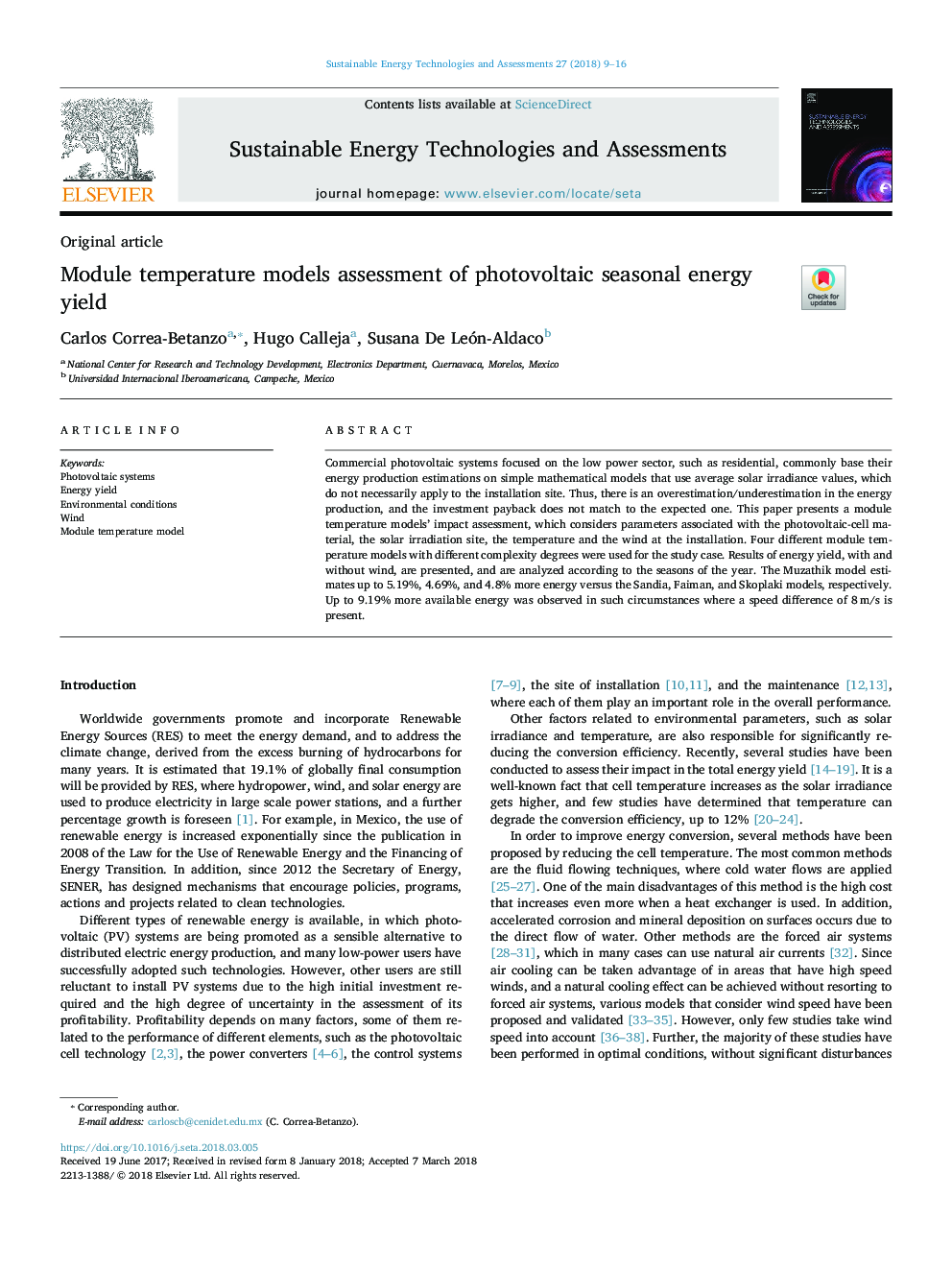| Article ID | Journal | Published Year | Pages | File Type |
|---|---|---|---|---|
| 8122627 | Sustainable Energy Technologies and Assessments | 2018 | 8 Pages |
Abstract
Commercial photovoltaic systems focused on the low power sector, such as residential, commonly base their energy production estimations on simple mathematical models that use average solar irradiance values, which do not necessarily apply to the installation site. Thus, there is an overestimation/underestimation in the energy production, and the investment payback does not match to the expected one. This paper presents a module temperature models' impact assessment, which considers parameters associated with the photovoltaic-cell material, the solar irradiation site, the temperature and the wind at the installation. Four different module temperature models with different complexity degrees were used for the study case. Results of energy yield, with and without wind, are presented, and are analyzed according to the seasons of the year. The Muzathik model estimates up to 5.19%, 4.69%, and 4.8% more energy versus the Sandia, Faiman, and Skoplaki models, respectively. Up to 9.19% more available energy was observed in such circumstances where a speed difference of 8â¯m/s is present.
Related Topics
Physical Sciences and Engineering
Energy
Energy Engineering and Power Technology
Authors
Carlos Correa-Betanzo, Hugo Calleja, Susana De León-Aldaco,
